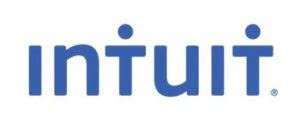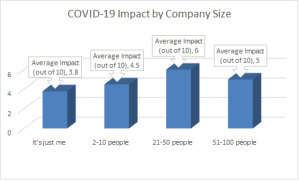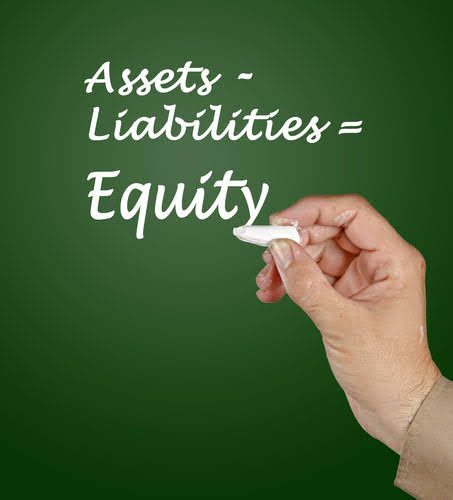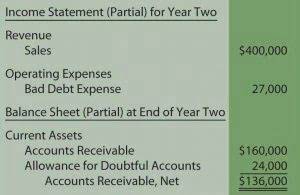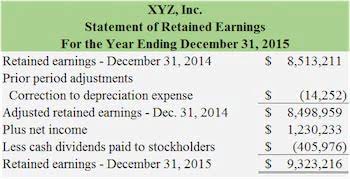However, the main reason for discontinuing the use of LIFO under IFRS and ASPE is the use of outdated information on the balance sheet. Recall that with the LIFO method, there is a low quality of balance sheet valuation. Therefore, the balance sheet may contain outdated costs that are not relevant to users of financial statements. For example, consider a company with a beginning inventory of 100 calculators at a unit cost of $5. The company purchases another 100 units of calculators at a higher unit cost of $10 due to the scarcity of materials used to manufacture the calculators.
- However, the main reason for discontinuing the use of LIFO under IFRS and ASPE is the use of outdated information on the balance sheet.
- If you’re considering LIFO, be sure to have a conversation with your CPA.
- Let’s say on January 1st of the new year, Lee wants to calculate the cost of goods sold in the previous year.
- Under LIFO, the company reported a lower gross profit even though the sales price was the same.
- Recall that with the LIFO method, there is a low quality of balance sheet valuation.
To calculate the Cost of Goods Sold (COGS) using the LIFO method, determine the cost of your most recent inventory. The cost of the remaining 1200 units from the first batch is $4 each for a total of $4,800. LIFO reserve refers to the amount by which your business’s taxable income has been reduced as compared to the FIFO method.
Below, we’ll dive deeper into LIFO method to help you decide if it makes sense for your small business. Most companies that use LIFO are those that are forced to maintain a large amount of inventory at all times. By offsetting sales income with their highest purchase prices, they produce less taxable income on paper. Under LIFO, the company reported a lower gross profit even though the sales price was the same. Now, it may seem counterintuitive for a company to underreport profits. However, by using LIFO, the cost of goods sold is reported at a higher amount, resulting in a lower profit and thus a lower tax.
CFI is the global institution behind the financial modeling and valuation analyst FMVA® Designation. CFI is on a mission to enable anyone to be a great financial analyst and have a great career path. In order to help you advance your career, CFI has compiled many resources to assist you along the path. FIFO and LIFO are helpful tools for calculating the value of your business’s inventory and Cost of Goods Sold. FIFO assumes that your oldest goods are sold first, while LIFO assumes that your newest goods are sold first. The FIFO (“First-In, First-Out”) method means that the cost of a company’s oldest inventory is used in the COGS (Cost of Goods Sold) calculation.
If the number of units sold exceeds the number of oldest inventory items, move on to the next oldest inventory and multiply the excess amount by that cost. The cost of inventory can have a significant impact on your profitability, which is why it’s important to understand how much you spend on it. With an inventory accounting method, such as last-in, first-out (LIFO), you can do just that.
Your financial statements and tax return must be consistent and use the same method. But if your inventory costs are decreasing over time, using the LIFO method will mean counting the cheapest inventory first. Your Cost of Goods Sold would be lower and your net income will be higher. Your leftover inventory will be your oldest, more expensive stock meaning a higher inventory value on your balance sheet.
What Is FIFO?
To make the best decision for your business, it’s important to consult your CPA. If the manufacturing plant were to sell 10 units, under the LIFO method it would be assumed that part of the most recently produced inventory from Batch 2 was sold. The inventory process at the end of a year determines cost of goods sold (COGS) for a business, which will be included on your business tax return. COGS is deducted from your gross receipts (before expenses) to figure your gross profit for the year. FIFO is more common, however, because it’s an internationally-approved accounting methos and businesses generally want to sell oldest inventory first before bringing in new stock.
Leave inventory management to the pros
This article will cover how to xero on pc determine ending inventory by LIFO after selling in contrast to the FIFO method, which you can discover in Omni’s FIFO calculator. Also, we will see how to calculate its cost of goods sold using LIFO, and show how to use our LIFO calculator online to make more profits. Last In, First Out is a method of inventory valuation where you assume you sold your newest inventory first. This is the opposite of the most common method, First In, First Out (FIFO).
LIFO Calculator
LIFO is used to calculate inventory value when the inventory production or acquisition costs substantially increase year after year, due to inflation or otherwise. Even though this method demonstrates a drop in company profits, it helps with tax savings due to higher inventory write-offs. The FIFO method is the more common and trusted method compared to LIFO, since it offers few discrepancies when calculating inventory’s value. However, LIFO is sometimes used when businesses are prone to higher COGS and lower profit margins.
Having a single source of accurate supply chain analytics and data is critical to ensuring the financial well-being of your ecommerce business. Another benefit of FIFO is that you’re able to track and regulate quality and offset the risk of high holding costs for storing dead stock. US companies may choose between the LIFO or the FIFO method (there are other methods too, but for now, we’ll focus on the comparison of these two).
More Free Templates
But in some cases, it can make your business look more profitable or be a better representation of how your business operates. Michelle Payne has 15 years of experience as a Certified Public Accountant with a strong background in audit, tax, and consulting services. She has more than five years of experience working with non-profit organizations in a finance capacity. Keep up with Michelle’s CPA career — and ultramarathoning endeavors — on LinkedIn. As with FIFO, if the price to acquire the products in inventory fluctuates during the specific time period you are calculating COGS for, that has to be taken into account. Let’s say on January 1st of the new year, Lee wants to calculate the cost of goods sold in the previous year.
How To Calculate LIFO
Pharmaceutical products tend to experience high inflation in prices. Thus, it is most accurate for them to report based on the most recent prices of their inventory purchases. Therefore, the oldest costs are the ones that remain on the balance sheet while the most recent ones are expensed first. LIFO, or Last In, First Out, is an inventory value method that assumes that the goods bought most recently are the first to be sold. When calculating inventory and Cost of Goods Sold using LIFO, you use the price of the newest goods in your calculations. To calculate FIFO, multiply the amount of units sold by the cost of your oldest inventory.
LIFO (“Last-In, First-Out”) means that the cost of a company’s most recent inventory is used instead. In periods of deflation, LIFO creates lower costs and increases net income, which also increases taxable income. If a company uses a LIFO valuation when it files taxes, it must also use LIFO when it reports financial results to its shareholders, which lowers its net income. Since LIFO expenses the newest costs, there is better matching on the income statement. The revenue from the sale of inventory is matched with the cost of the more recent inventory cost. The total cost of goods sold for the sale of 350 units would be $1,700.
Here, we are assuming the company has not sold any product yet. Please note how increasing/decreasing inventory prices through time can affect the inventory value. There are three other vertical analysis of balance sheet valuation methods that small businesses typically use.
To elect for the LIFO inventory accounting method, you must fill in and submit Form 970, along with your tax returns in the year you first implemented LIFO. Let’s imagine a stationery supplier, who has 300 units of pens in stock, purchased these in 3 batches of 100 units each. Due to inflation, the next two batches cost $2 each and $3 each unit, respectively.



